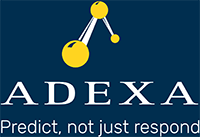Advanced Planner-Assisted Systems (APAS)
There has been a lot of talk regarding autonomous planning systems and the use of AI/ML to make the planning process more productive and the operations more optimized. Just like autonomous cars, the planning part is not too hard, i.e. the use of GPS as to where to go and when we get there. The uncertainty and how we respond when disruptions occur, are the key issues to be addressed. Planning must be done with uncertainty in mind, execution must be done with the impact of disruptions in mind. Ironically, almost all supply chain planning systems available today plan deterministically and the response to disruptions are performed manually and laboriously by scenario analysis, just to know what the potential impact of a disruption is and what options are available to them.
Most of today’s S&OP solutions are designed to assist planners. We feel differently, just like driver assisted vehicles, planning systems need to be assisted by the planners, not the planners be assisted by the system, so that the system can do most of the heavy lifting and ask for help when needed. We refer to such systems as Advanced Planner-Assisted Systems (APAS). With APAS, the system plans based on knowing the potential uncertainties, having learned from past planning experiences such as potential issues seen before, and creates a more realistic plan as far into the future as needed or necessary. A concept based on Least Commitment Planning philosophy. At the same time, as the plans are executed, the system monitors events, measures their impact and responds in real-time as needed, in some cases with assistance from the planners.
The ingredients of APAS are obviously a true knowledge of the operations, the so-called Supply Chain Digital Twin. But that is not enough; the structure and behavior of the supply chain is not static; they change all the time, as road conditions change and improve or degrade over time for autonomous cars. To this end, the system must be equipped with a self-correcting feature that monitors the environment and yields an updated model of the operations and their behavior. For example, how the equipment efficiencies change, or supplier lead-times vary.
Furthermore, the policies and business processes must adapt. This requires a self-improving capability that keeps learning and improving policies automatically. A simple example is variability and optimization of safety stock levels needed based on seasonality, competition, demand changes etc. Lastly, with APAS technology, there is a continuum of planning and execution. No more trying to bridge the gap between S&OP and S&OE. A unified environment that is vertically connected would allow shared data between different levels of planning that removes data and decision latency currently experienced in systems that are not vertically connected, even though they are so called integrated.
For more information on how AI/ML can provide APAS click Here.




